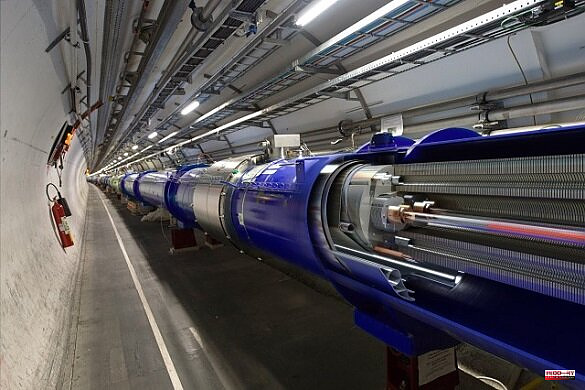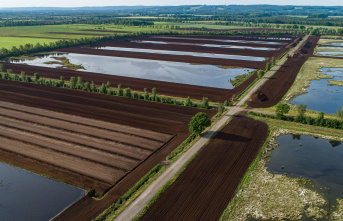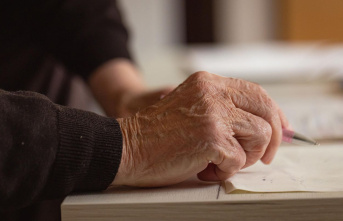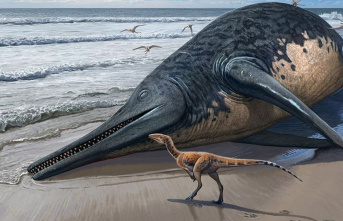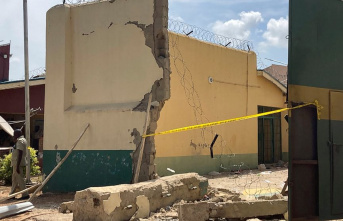CERN announced that the world's strongest particle accelerator will begin delivering proton collisions for experiments at an unprecedented energy level.
The Large Hadron Collider will soon be able to provide data at an unprecedented energy of 13.6 TeV. The international collaborations that will collect the data and analyze it include scientists from the University of Liverpool.
This marks the beginning of the third data-taking run for physics at CERN on the French-Swiss border, near Geneva.
After more than three years of maintenance and upgrades, the beam started to circulate in April.
The LHC machine had been previously recommissioned and the injectors were able to work with higher-intensity beams of energy and newer LHC machines.
Now beam operators have announced that the beam is stable and ready for data collection to support science.
Now, the LHC will run round the clock for nearly 4 years at a record energy of 13.6 trillion electronvolts. (TeV).
Liverpool University scientists were part of an international effort to improve performance of three of LHC's main experiments, ATLAS, LHCb and ALICE, in order to increase data sample and generate more collision energy.
Professor Monica D'Onofrio, University of Liverpool team leader, is responsible for the ATLAS/FASER experiment groups.
She said that this is an exciting time for everyone: After years of hard work to improve the ATLAS detector system, including new components, better data readout, and improved online selection, we now have much larger data samples to collect, with a higher quality than in previous runs.
"We will be in a position to probe the Higgs boson's nature with unprecedented precision, check whether it decays into new particles, such as those that could make dark matter, and search new physics at an accelerator that has the highest energy."
"Our Liverpool group has been at the forefront in many of these searches, precision measurements, and we look forward to beginning this new phase for the ATLAS experiment."
"It's also amazing that Run 3 will bring new data to several smaller LHC experiments built during the long shutdown. Liverpool is part FASER, which was created to search for decays of hypothesized particles with long lives that were produced in LHC collisions. These particles could be candidates for dark matter. It will complement the ATLAS Physics program, which explores previously unexplored regions. We are all committed to making the most of these amazing detectors and accelerators in the coming years.
Professor Marielle Chartier is the team leader of the University of Liverpool ALICE experiment. She says that after nearly ten years of development, the ALICE experiment has successfully upgraded its detectors, electronics, and triggering systems. This will allow it to be ready for its third run of operation today. ALICE will collect more data from LHC proton proton, proton ion, and heavy-ion collisions over the next ten years, which will allow it to do so much faster than ever before.
"I'm personally excited to see how the new Silicon Inner Tracking system will perform in high-precision measurements for short-distance dynamics at high temperatures and gain a deeper understanding about the quark-gluon Plasma."
"This detector is the largest ever made silicon pixel tracker and the first to be entirely constructed of CMOS sensors. It is also the thinnest silicon particle tracker at LHC.
"The University of Liverpool and STFC Daresbury Laboratory made significant contributions to the construction, assembly, and commissioning phases of this massive (approximately 10m2 digital camera of nearly 13. billion pixels, capable of taking 50,000 photos per second!
Tara Shears is the Liverpool Professor of Particle Physics and works on the LHCb experiment. She says, "There's so many things about the universe we need to understand: Why matter and antimatter differ; what dark matter is made from; whether the new Physics we hope and believe is out there, somewhere." Run 3 is crucial to us. We will have so many data to conduct a forensic investigation on all of these questions.
"LHCb has undergone extensive overhaul and upgrades to be ready for data collection. Liverpool has constructed one of the main particle detectors. Nobody expected a pandemic when we designed this project! Liverpool's amazing staff has made it possible for this complex detector to be assembled, delivered, and installed in time for Run 3. It is a testament to their dedication and skill. This new detector will provide data that will allow the entire LHCb Physics program to be possible.
Major upgrades have been made to the data readout and selection systems of the four major LHC experiments, including new detector systems as well as new computing infrastructure.
These changes will enable them to collect much larger data samples and data with a higher quality than previous runs. AtLAS and CMS expect to record more collisions in Run 3 than the previous two physics runs. ALICE has a goal to record a remarkable fifty-fold increase in collisions recorded by the LHCb experiment.
Run 3 will expand the already extensive LHC physics program with increased data samples and greater collision energy.

